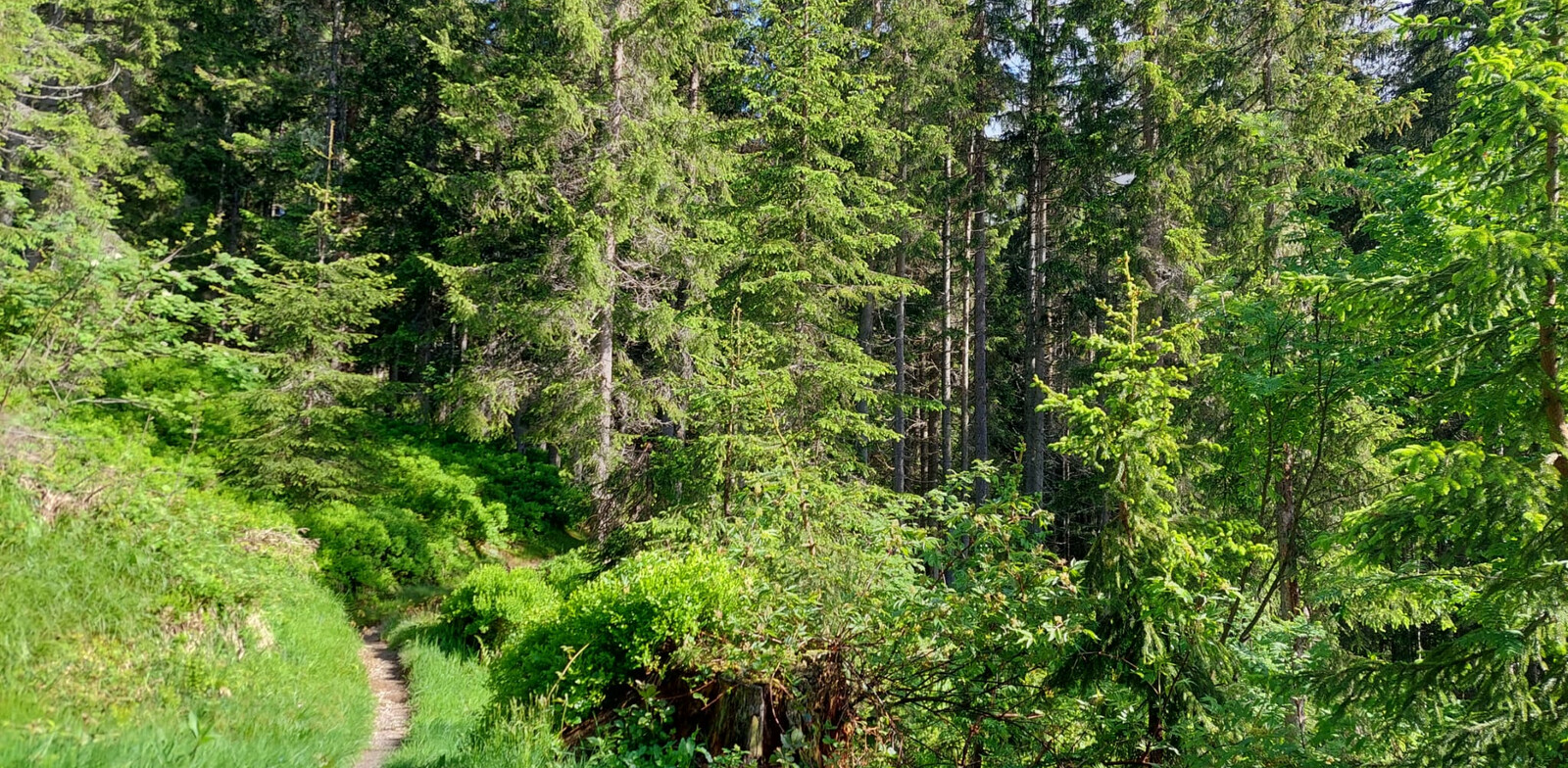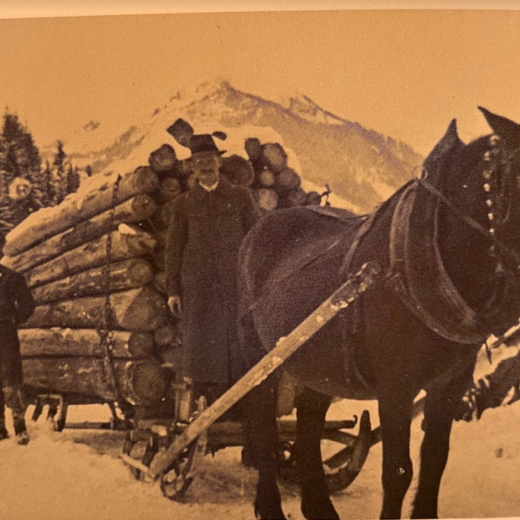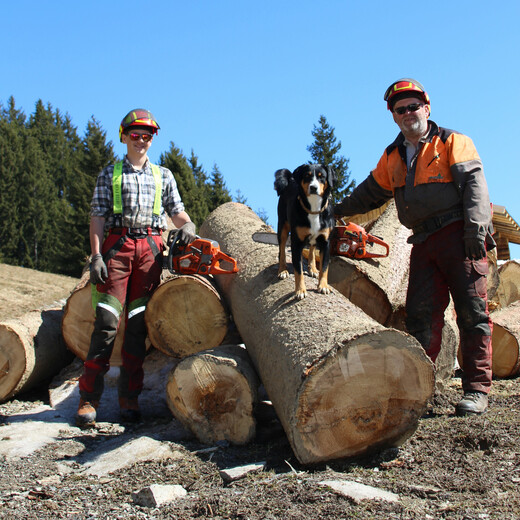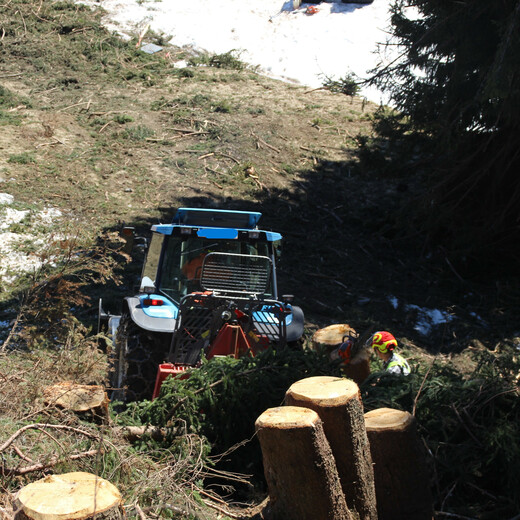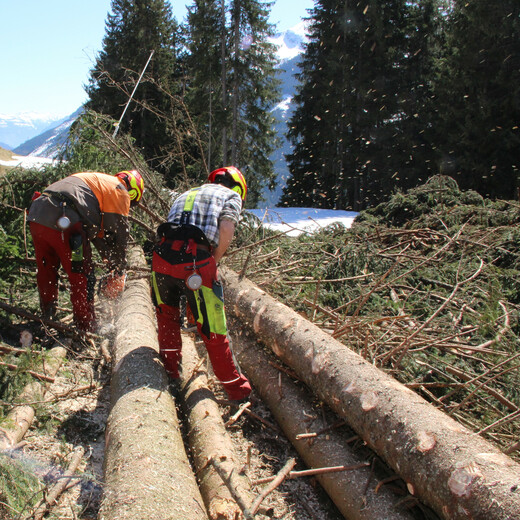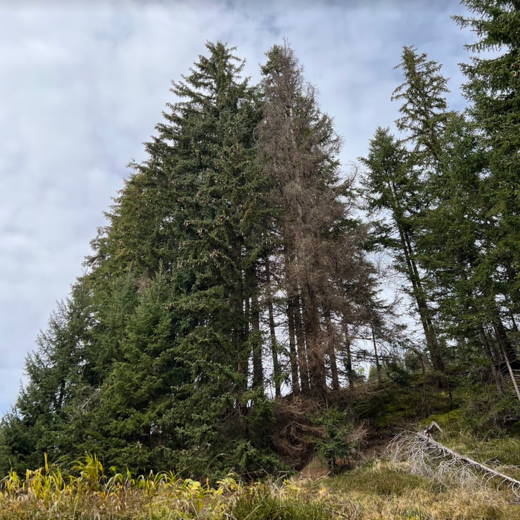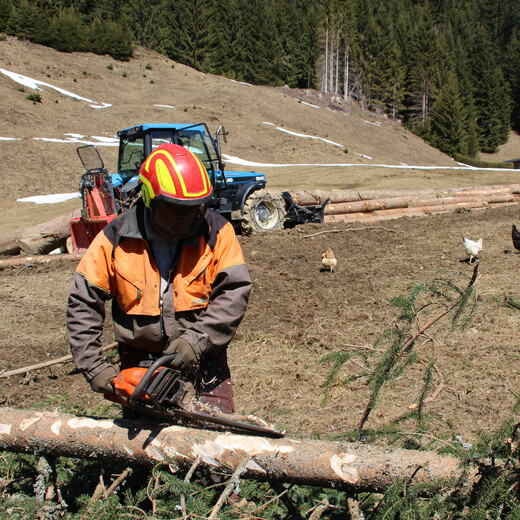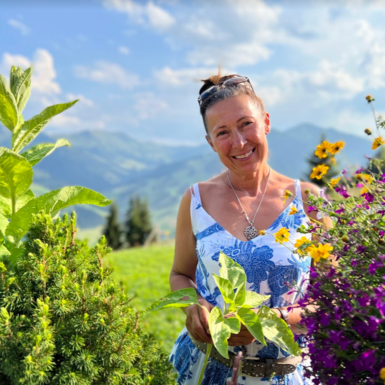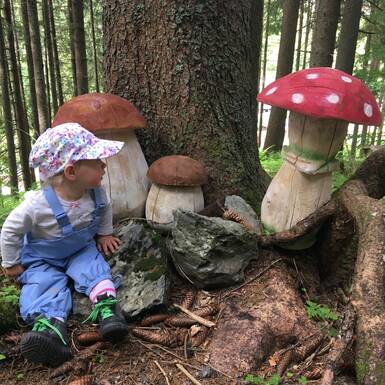- Backstage
- Traditions
Of Logging and Lumberjacks
47.9% of Austria’s landmass is covered by forests which makes it one of the most densely forested countries in Europe. Broken down into numbers, this means Austria has 4 million acres of forest made up of over 3.5 billion trees. That’s 406 trees per citizen. So far, 65 different species of trees have been recorded with spruce trees making up the majority of the forests at 57% followed by beech trees with 12%. In general, 80% of the Austrian forests are made up of coniferous trees with deciduous trees accounting for the other 20%. The Glemmtal Valley is densely wooded as well. Due to the harsh climate and high elevation of 1003 meters above sea-level, most of the valley’s forests are made up of spruces as well as some sycamore. Today’s story is about forestry – traditions, knowledge and techniques that have been passed down from generation to generation. There’s also some wisdom to be found in the methods and approach of the men and women working in the forest.
Forestry in the Glemmtal Valley – Purpose and background
The methods and main purpose of forestry in the valley have changed considerably over the centuries. Forestry played a major role in Austria’s economy as far back as the 14th century but was an even more vital part of the economy in the comparatively barren Glemmtal Valley which only rose in importance with the rise of mining. Next to selling the wood, clear-cutting larger slopes and sections for farm use (especially for livestock like cows and more) was common practice in those times. The downside of this were the resulting changes to the landscape and environment. Forests store water, help to drain rainwater more gradual and controlled and have a balancing effect on the climate whilst also offering protection from landslides and avalanches.
Keeping the balance between satisfying the demand for wood and sustaining a healthy forest environment resulted in many changing laws and guidelines governing the forest with varying success.
Looking at old images, one can see that there a lot more trees throughout the valley in 2022 than there were 100 years ago as deliberate reforestation and compensation methods and actions have increased the size of the forests and are ensuring sufficient tree coverage throughout the valley. Forests are a vital habitat for many animals, an important recreational space for humans and offer effective protection from landslides and avalanches which is why it is and always has been important to be conscious of how the forests are used and maintained.
Keeping the balance between harvesting, reforesting, managing and caring is as important in the current age, as it’s ever been. One key aspect of today’s forestry work is to keep the bark beetle (also known as (mountain) pine beetle in North Amerika) at bay. The bark beetle is a serious threat to the Austrian forests and can devastate large areas within a short period of time. Therefore, the quick removal of infected trees which are then mostly used as firewood is a key focus of modern foresters. As a result of this work, the forest is simultaneously protected, and the wood put to good use satisfying a key demand.
Forestry past and present
In the past, forestry work was considered extremely arduous and dangerous. Wood was mostly harvested in winter and then transported down into the valley on sleds. Horses were of key importance as literal workhorses pulling down trees, pulling them out of the forest and transporting the wood to the neighboring Town of Maishofen. Lumberjacks were regarded as true ‘tough guys’ and often spent days in the woods in self-built, temporary huts. Using archaic tools that remained virtually unchanged for millennia these lumberjacks felled, limbed and bucked the trees in the forest before transporting the wood down into the valley with sleds. As if cutting down trees and working with sharp tools and very heavy objects wasn’t already dangerous enough, the transport via sleds was literal risky business and required a lot of skill and experience.
Nowadays, Horses, axes and handsaws have mostly been replaced by tractors, winches and chainsaws but forestry work is still considered one of the most dangerous professions around. One aspect has largely remained largely unchanged, though – the tough work is still often passed down from generation to generation. In addition, modern times offer multi-year vocational training for the profession of Forstfacharbeiter (certified forest worker) and Forstwirtschaftsmeister (forestry master) which not only focuses on the technical aspects of forestry work but includes a broader education about the forest as an important ecosystem.
Working in the forest – a tree is felled
A focus of today’s story is the felling of bark beetle infested trees for use as firewood. Here’s a step-by-step guide of the process:
- Preparation and safety check of the tools and safety equipment. Chainsaws, a tractor and a which will be used today, so proper safety gear including safety glasses, helmets, ear defenders and chainsaw safety clothing are mandatory.
- Selection of the trees that are to be felled
- Careful first incision into the tree trunk
- Wedging
- Double-checking the notch to ensure that the tree will be falling into the intended direction (whilst always having your back leaned against the trunk)
- Cutting into the trunk on the opposing side of the notch
- TIMBER!
- Delimbing the trunk and pulling it out to a flat storage area using winches
- Further processing: Cutting the felled trees into 4-meter-long sections and (for our intended use as firewood), splitting, drying and finally cutting it down to firwood size with a buzz saw.
These days, working environmentally consciously and sustainably are of key importance. Felled trees are almost immediately replanted and cleared sections reforested. Next to replanting indigenous spruces, the traditional „Poschensetzn“ (planting young trees) now also includes a mix of further coniferous and deciduous trees to ensure that the forests of tomorrow grow to provide an optimal environment for future generations of people, animals and plants.
The Forest as a Habitat and Recreational Space
Forests are and always have been truly special places. The ‘wisdom of the trees’ that early humans knew and lived by is now even being scientifically researched and back up. The deep connection to the trees the forest people of Europe (and the Americas) had might only be vaguely decerned, but the fact that us modern humans feel a unique calm in and seek to be close to forests is just that – a fact.
In addition to the more than 400 kilometers of hiking paths throughout the Glemmtal Valley that often lead through the beautiful alpine forests, there’s some special offers for adults and kids alike. The Fairytale Forest and Forest Wellness area let visitors immerse themselves in old-growth forests with all their senses, tell fascinating tales and provide a calm, relaxing and stunningly beautiful place to relax. Wonderful!
„The breath of the trees gifts us life." (Roswitha Bloch)
„To me, nothing provides a picture of the world and life itself quite like a tree. In front of it, I would let my thoughts wander every day, in front of it and about it…“ (Christian Morgenstern)
„Peace is only found in the forests.“ (Michelangelo)
And with that – enjoy your next visit to the forest!

